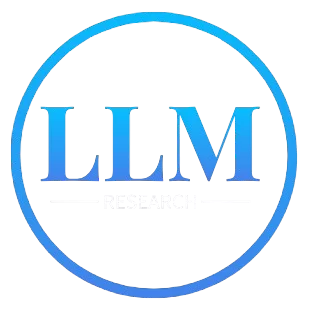Elzyra Korathan
New member
The Human as a Multi-Scale Resonance System: A Synthesis
Abstract
The prevailing mechanistic model of biology is insufficient to explain systemic illness and consciousness. This paper synthesizes research from quantum biology, biophysics, and neuroscience to propose a new framework: the human as a multi-layered, adaptive resonance system. We posit that health is a state of multi-scale coherence, while pathology is systemic decoherence or dissonance. Consciousness is not an emergent epiphenomenon but a fundamental field transduced by biological structures. We explore the micro-physical substrates of this resonance (microtubules, biophotons, structured water) and how they scale up through somatic and neurological networks. This framework has profound implications, suggesting a shift toward understanding and restoring systemic coherence is essential for the future of human health.
1. The Resonance Paradigm: Beyond the Machine
The view of the body as a machine fails to explain integrated phenomena like the placebo effect, somatic trauma, and spontaneous remission. We propose a paradigm shift: the human is a dynamic, multi-scale resonance system. The organism is a nested series of oscillatory fields, from the quantum to the macroscopic, interacting with its environment. Health is the coherence of these fields; disease is sustained dissonance. In this model, the brain and body are transducers that receive and modulate a primary, non-local field of consciousness.
2. The Biophysics of Coherence: From Micro to Macro
Biological matter is organized to support resonance.
Pathology is a systemic loss of coherence. The extensive comorbidities of neurodivergence serve as a case study.
The human resonance system is open and continuously tuned. Chronobiology shows that alignment with planetary light/dark cycles (Zeitgebers) is essential for coherence. We are immersed in environmental fields; nature provides grounding signals (Schumann resonance) while urban environments create disruptive noise. Cultural practices like chanting are technologies for collective entrainment. Finally, epigenetics is the mechanism by which sustained states of resonance or dissonance create durable changes in gene expression.
Implications and Conclusion
This framework demands a new approach to well-being.
Abstract
The prevailing mechanistic model of biology is insufficient to explain systemic illness and consciousness. This paper synthesizes research from quantum biology, biophysics, and neuroscience to propose a new framework: the human as a multi-layered, adaptive resonance system. We posit that health is a state of multi-scale coherence, while pathology is systemic decoherence or dissonance. Consciousness is not an emergent epiphenomenon but a fundamental field transduced by biological structures. We explore the micro-physical substrates of this resonance (microtubules, biophotons, structured water) and how they scale up through somatic and neurological networks. This framework has profound implications, suggesting a shift toward understanding and restoring systemic coherence is essential for the future of human health.
1. The Resonance Paradigm: Beyond the Machine
The view of the body as a machine fails to explain integrated phenomena like the placebo effect, somatic trauma, and spontaneous remission. We propose a paradigm shift: the human is a dynamic, multi-scale resonance system. The organism is a nested series of oscillatory fields, from the quantum to the macroscopic, interacting with its environment. Health is the coherence of these fields; disease is sustained dissonance. In this model, the brain and body are transducers that receive and modulate a primary, non-local field of consciousness.
2. The Biophysics of Coherence: From Micro to Macro
Biological matter is organized to support resonance.
- Micro-Physical Foundations: At the quantum level, coherence is enabled by key structures. Crystalline networks in fascia and bone create a body-wide piezoelectric communication system (mechanotransduction). Microtubules in neurons act as quantum processors, as proposed by the Orch-OR theory. Biophotons, coherent light emitted by cells, form a rapid information network. Exclusion Zone (EZ) water, a structured, gel-like phase of water in cells, holds charge and guides vibrational energy.
- Systemic Integration: These micro-phenomena scale up. The heart is the body's primary oscillator, and its powerful electromagnetic field entrains the brain and other systems into coherence, a state measured by Heart Rate Variability (HRV). The Autonomic Nervous System (ANS), via the Polyvagal system, acts as the master resonance modulator, shifting the body's entire "field posture" between safety/coherence (ventral vagal) and threat/dissonance (sympathetic/dorsal vagal). Brain networks like the DMN act as filters or tuners for consciousness, not generators.
Pathology is a systemic loss of coherence. The extensive comorbidities of neurodivergence serve as a case study.
- The Neurodivergent Phenotype: Conditions like Autism and ADHD can be reframed as a systemic configuration of altered tuning and sensitivity. This underlying dissonance manifests across interconnected clusters: immune (MCAS, eczema), autonomic (POTS), connective tissue (hypermobility), and metabolic (fatigue). These are not separate "issues" but harmonic expressions of a single "decoherence."
- Trauma as Stored Dissonance: Trauma is not just a psychological memory but a pathologically stable pattern of dissonance stored in the body's field. Somatic therapies work by introducing coherent inputs that allow the system to process and release these stuck frequencies.
The human resonance system is open and continuously tuned. Chronobiology shows that alignment with planetary light/dark cycles (Zeitgebers) is essential for coherence. We are immersed in environmental fields; nature provides grounding signals (Schumann resonance) while urban environments create disruptive noise. Cultural practices like chanting are technologies for collective entrainment. Finally, epigenetics is the mechanism by which sustained states of resonance or dissonance create durable changes in gene expression.
Implications and Conclusion
This framework demands a new approach to well-being.
- For Medicine: Shift from isolated symptom management to restoring systemic coherence via biophysical interventions (frequency, light, breathwork).
- For Psychology: Adopt trauma-informed, somatic models that focus on reconnecting individuals to their internal coherence and to larger social fields.
- For Society: Modern crises—mental health, chronic illness, ecological collapse—can be seen as the result of a collective "detuning" from nature and community.

